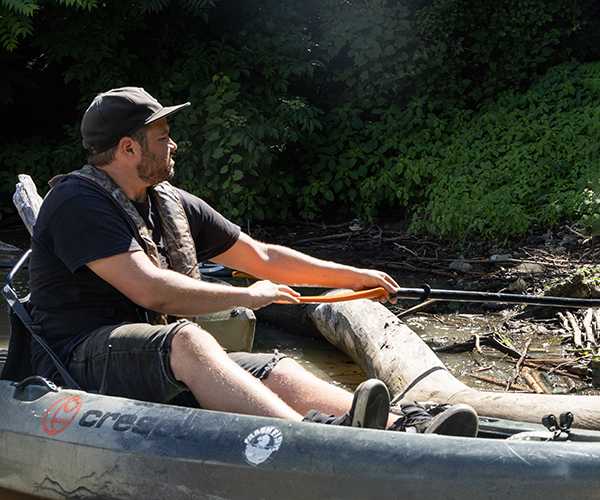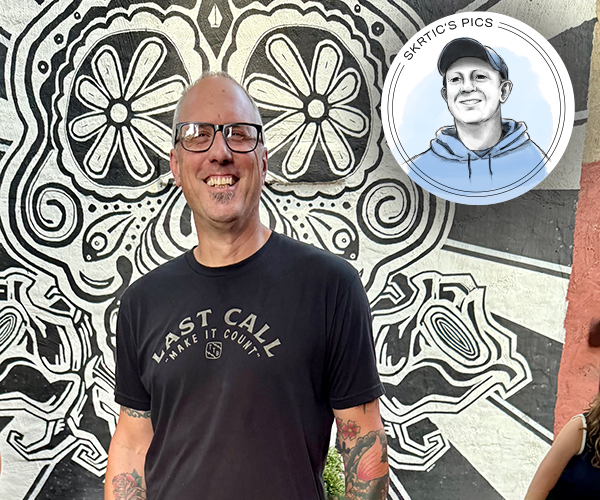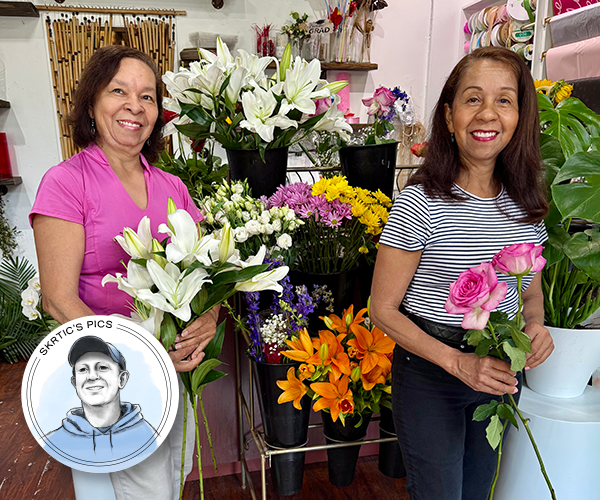Ever think of leaving your job for less money? While it may sound crazy, some people are looking for more than a higher salary. They want to help build a city they can be proud of, and working at nonprofit organizations gives them the chance to do that. They have decided that doing something they love is more important than making major bucks.
Financially Stable
After graduating from Harvard University with a degree in economics, Brad Whitehead, a central Illinois native, had job offers in New York City, Chicago, San Francisco and Cleveland.
“I chose Cleveland for two reasons,” Whitehead says. “First, it felt like a real, genuine city.”
The second reason was that McKinsey and Co., the international management consulting firm he went to work for, had offices in Cleveland and a lot of plans for helping the city. “They told me what they were doing to form the Cleveland of tomorrow and it was pretty exciting to me.”
But during his 20 years at McKinsey, he worked on corporate strategies and performance topics with other companies anywhere but in Cleveland. He also led the firm’s North American environmental practice, which collaborated with nonprofits.
“I always had a strong interest in both public policy and the social good,” he says.
Whitehead, 45, took a few leaves of absence from the firm to work on projects for organizations such as the National Science Foundation, volunteering on tropical deforestation issues in the Brazilian Amazon.
“Most of my civic activities were done nationally and internationally,” he says. “I never really had a chance to connect with my home community.”
After making senior partner at McKinsey, Whitehead began to re-evaluate his job. He was traveling four days a week, leaving his wife and four children at home.
“I began asking the question, ‘Is this really the last chapter in my life?’ ” he says. “And I thought about what I really wanted to do and what would be most meaningful for me.”
So he started asking around at nonprofits about opportunities to help out. He joined a pro bono project at Bio Enterprise, an organization that supports the growth of bioscience companies in Northeast Ohio. “I discovered that I really loved the economic developmental issues in this city,” he says.
And he wanted to do more for Cleveland. He began working on a senior fellowship for the Cleveland Foundation, taking another leave of absence from Mc-Kinsey. Whitehead had such a great time, he decided in 2003 to join the foundation full time as the program director of economic development, even though it meant a 75 percent pay cut. He’s still there.
In addition to his duties awarding grants, Whitehead is working on new projects. The Cleveland Foundation has joined with 70 other foundations to form the Fund for Our Economic Future to advance economic development in Northeast Ohio.
Whitehead’s work at the Cleveland Foundation has given him the meaning he was looking for. “It’s been one of the most professionally rewarding experiences of my life,” he says. “It completely renewed me as a professional and energized me as a person. It gave new meaning to my work.”
A Development in the Case
As a child, Susan Stevens Jaros would spend her weekends with her father. A lawyer, he often had to put in extra hours. Jaros would tag along.
“He would talk to me all the way downtown and back about cases he had,” she says. “I found it fascinating.”
So it was no surprise when she went to law school at Case Western Reserve University and worked at the Legal Aid Society of Cleveland while getting her degree. But she soon moved on to the Cleveland law firm Hahn, Loesser, Freedheim, Dean and Wellman (now Hahn, Loesser and Parks).
One of her clients there was the Cleveland Museum of Art. She worked on contracts for the May Show and the agreement for commissioning the sculpture “Portal” outside the Justice Center.
Jaros left the firm to teach classes at Case law school on law and visual arts, using her experience working on CMA cases. In 1982, a new dean recruited her as the law school’s director of development. The next year, she moved to the university’s development office to help raise $417 million for Case.
Her life changed from the fast-paced work of court dates and legal briefs to working on campaigns and raising money. At Case, she helped to expand and improve programs and institutions, which gave her a satisfaction she had not gotten previously. She also got to “work with people who want to make changes in Cleveland,” she says.
Meanwhile, the museum never forgot her. In 2001, the CMA’s board of trustees and its new director, Katharine Lee Reid, asked her to join the museum to help with a major campaign of its own. She jumped at the chance. She’s now deputy director of development and external affairs.
“It was a natural evolution for me,” she says. “This is as satisfying a career as I can imagine. I think I have been able to make a bigger mark doing what I am doing now than if I had been a lawyer.”
One way she raises funds is by working with the board’s campaign cabinet, which suggests people or companies willing to help out. She is also responsible for marketing and communications at the museum.
Her law background has helped in her new career path by teaching her how to read briefs, write proposals and persuade people. But some things have changed, like her salary. “As a lawyer, you have billable hours,” she says with a laugh. Though she is not making a lawyer’s salary, she is proud of her degree. “A law degree is so valuable, you are not throwing it away if you find another avenue.”
Now, she may have taken on the biggest case of her career. Jaros, 58, is campaigning for the CMA’s $258 million renovation and expansion. She says it’s going well so far.
“It has been unbelievably humbling to see how much the people of Cleveland love this institution,” Jaros says.
Though she admits she has no artistic ability, she has grown to love the collections she works to preserve.
“I came to know the art through the legal process,” she says. “But walking around the museum, you learn the stories behind the pieces and you can really feel the power of the art.”
One with Nature
Public relations sounded like a great career for Steve Cadwell.
“It all began with the ‘Larry King Show,’ ” he says. One night, he was listening to the late-night radio broadcast King hosted before his CNN show. A guest, the head of a national ad agency, was talking about his job, and he sparked an interest in Cadwell.
“I knew that is what I wanted to do,” he says. He majored in public relations at Kent State University, and started working at International Total Services in Cleveland, an aviation security firm. He worked his way up to vice president of corporate communications.
“I enjoyed business and I liked being a part of a big company and telling their story to people,” Cadwell says.
But eventually he realized he wanted something different.
“I was looking for something that was more akin to my personal mission,” he says. A friend told him to do what he loved and the money would follow. That got him thinking about how he’d lived near the Metroparks as a child and enjoyed camping at Red Oak Camp in Kirtland. He decided to pursue a career in environmentalism.
He landed a communications and marketing management position at Clean-Land Ohio (now ParkWorks) in Cleveland, where he managed Trees for Tomorrow. The program planted 10,000 trees in Cleveland to celebrate its 1996 bicentennial.
“It ended up changing my life, literally,” he says. “What I was after really was improving the quality of my life.”
He took a 20 percent pay cut, but it didn’t make much difference to him. When people ask him about his salary, he laughs it off: “I always say I had a yearning to make a lot less money.”
While Cadwell publicized Clean-Land’s work, he also raised money and found volunteers to help plant and take care of the trees.
In 1998, his friend Nancy King Smith, then executive director of the Nature Center at Shaker Lakes, was looking to re-energize the center’s development plans. She asked Cadwell to come on board.
“It ended up being another perfect fit for me,” Cadwell says. “We had the opportunity to get our story out there a little bit more.”
The Nature Center’s building has doubled in size since Cadwell joined. The center is also mapping its plants, identifying species and removing invasive species from the area, while still educating more than 10,000 children a year on the environment.
Today, Cadwell, 46, runs the Nature Center. He took over as executive director this past June.
“Almost everybody in the nonprofit world can go out into the corporate world and make more money,” he says. “The people here believe in a cause, believe in a mission.”
Environmental Evolution
Holly Harlan was in high school when she decided to become an industrial engineer. The idea came from a career aptitude test that said she had the abilities for the job. Her counselor agreed.
“I didn’t even know what an engineer was,” Harlan says. “I looked it up in an encyclopedia and it said it was challenging and involved math and science.”
The Iowa native loved math and science and never backed down from a challenge. So, at Iowa State University, she learned about the relationship between man and machine. She did a co-op stint with John Deere along the way.
“It was a great experience,” she says. “I learned every aspect of the factory” — from running a stamping press to working with software that allows engineers to design products. “It gave me a really good view of how manufacturing works.”
After graduating in 1983, she worked at General Electric’s manufacturing management program. She gained experience with the company’s medical and plastic systems and running a production plant. Harlan came to Cleveland in 1987 to help start up a marketing site and work with companies such as Procter and Gamble and Heinz to incorporate GE packaging and designs into their products.
In 1990, when GE wanted to move her to another location, Harlan decided to leave the company. “I wasn’t anxious to do that,” she says. “I wanted to stay in a bigger city.”
She wanted to try something new, going against some of her colleagues’ advice. “They didn’t recommend leaving GE,” she says. “But I had a great understanding about how a business worked, how to do sales, how to do marketing, how to run a plant.”
So Harlan joined the Cleveland Advanced Manufacturing Program (CAMP) as a technology application engineer. “I would go out and identify ways that we could help small manufacturers be more successful in our region,” she says.
That was her first nonprofit job, and she was warned of a dramatic pay cut. “But it wasn’t dramatic,” she says. “Now, though, if I was still at GE I would easily be making six figures.”
Harlan, 45, worked at a few other nonprofits before starting her own. She felt the packaging of some products were wasteful and should be better, more efficiently designed. In 2000, she founded Entrepreneurs for Sustainability in Cleveland, which works to connect people who are implementing environmental sustainability principles in their new or existing business.
While E4S has only one other staffer, there are 2,500 people in her network.
She says she began her organization because no other nonprofit was doing what she wanted to do. “It was almost like it chose me, and I had no choice but to do this work,” she says.



